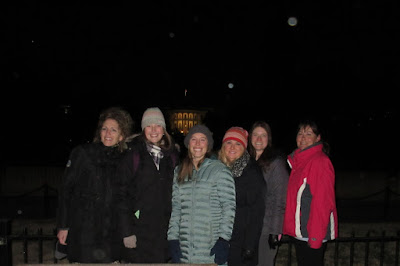 |
A crop-farming friend of ours posted a lovely article by The Farmer's Daughter USA detailing what crop farmers do in the winter. It covered doing taxes, buying seed for next year, fixing equipment, etc ... and all the time I was reading it I was thinking - dairy farmers do all that too. Many of us around here are also crop farmers because we feed our cattle the crops we grow.
Admittedly, winter is a much slower time because we aren't doing all the crop work. We're instead feeding the fruits of our labor - see the picture above!
That giant pile of chopped up corn is feeding our nice little cows all winter long. Every day we take some off of the pile, mix it up with other nutrients, and feed them.
That giant pile of chopped up corn is feeding our nice little cows all winter long. Every day we take some off of the pile, mix it up with other nutrients, and feed them.
 |
| Icicle, check. Cat tripping you, check. |
We keep our bred heifers in a different barn down the road, and our yearlings are close to our house. They each get their own ration - different from each other and different from the milking herd. The pregnant indoor cattle have different nutritional needs than the semi-outdoor year-old cattle. It's all a mix of corn silage, haylage, sudax, snaplage, and minerals. Kris works with the nutritionist to figure it all out, and it's always changing.
My son was sad because they have this large patch of ice at school they're not allowed to play on. I told them the teachers don't want them to fall and hit their heads because they're taking care of them. Then my other son found a giant patch of ice and ice slide at the barn. We played on it for a long time. Later, my son fell on my other son and he hurt his head. I said, "See? If that happened at school they would feel bad. I just check for a concussion!"
The cattle are full and happy, and we're all enjoying this mild winter. The kids are seeing Kris a lot, and we're doing ... taxes! Seeing the accountant! Filing forms! And learning about ice.











